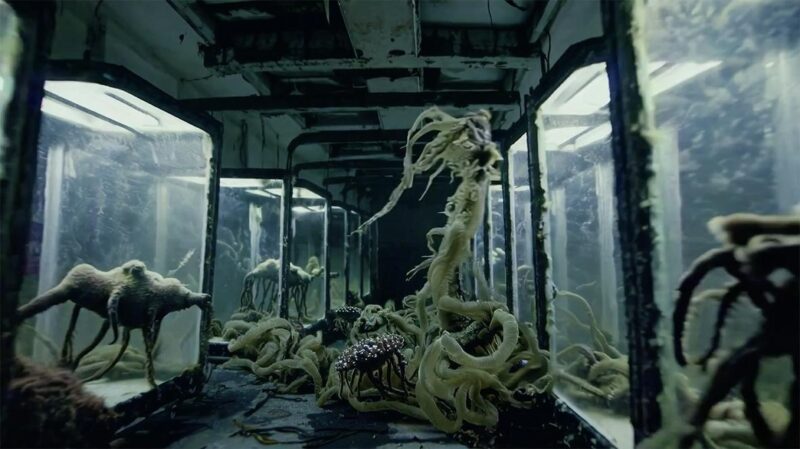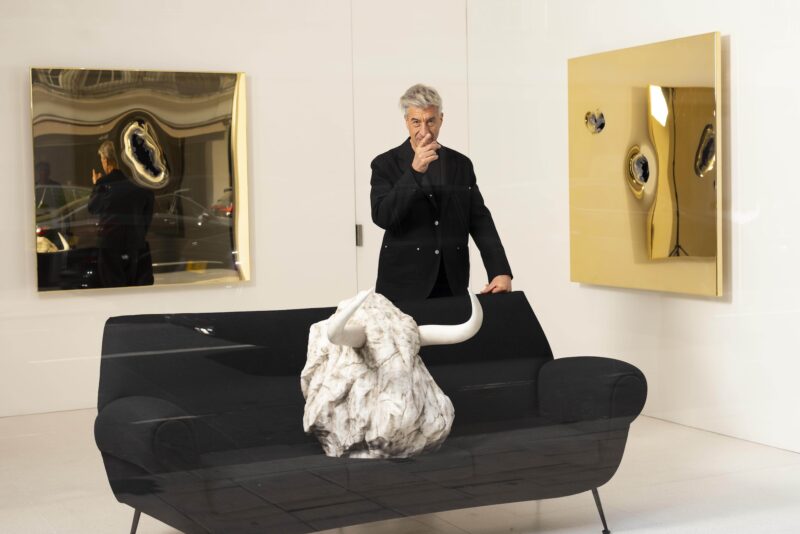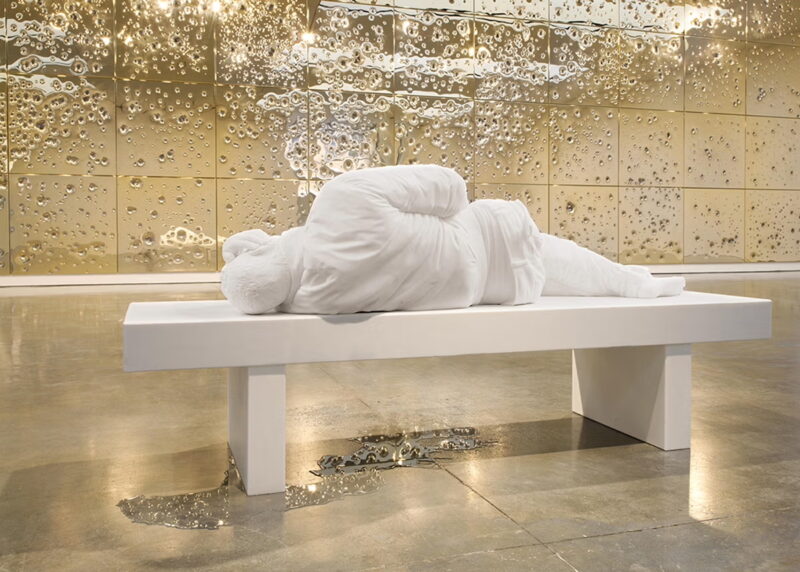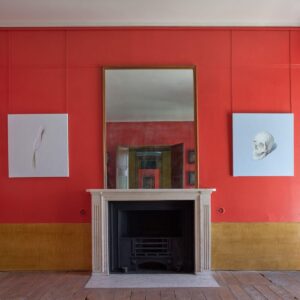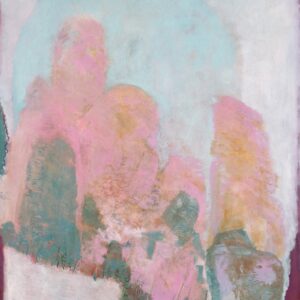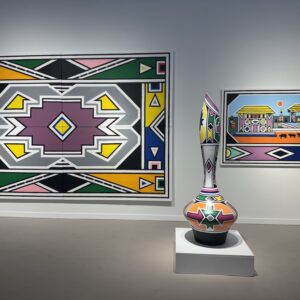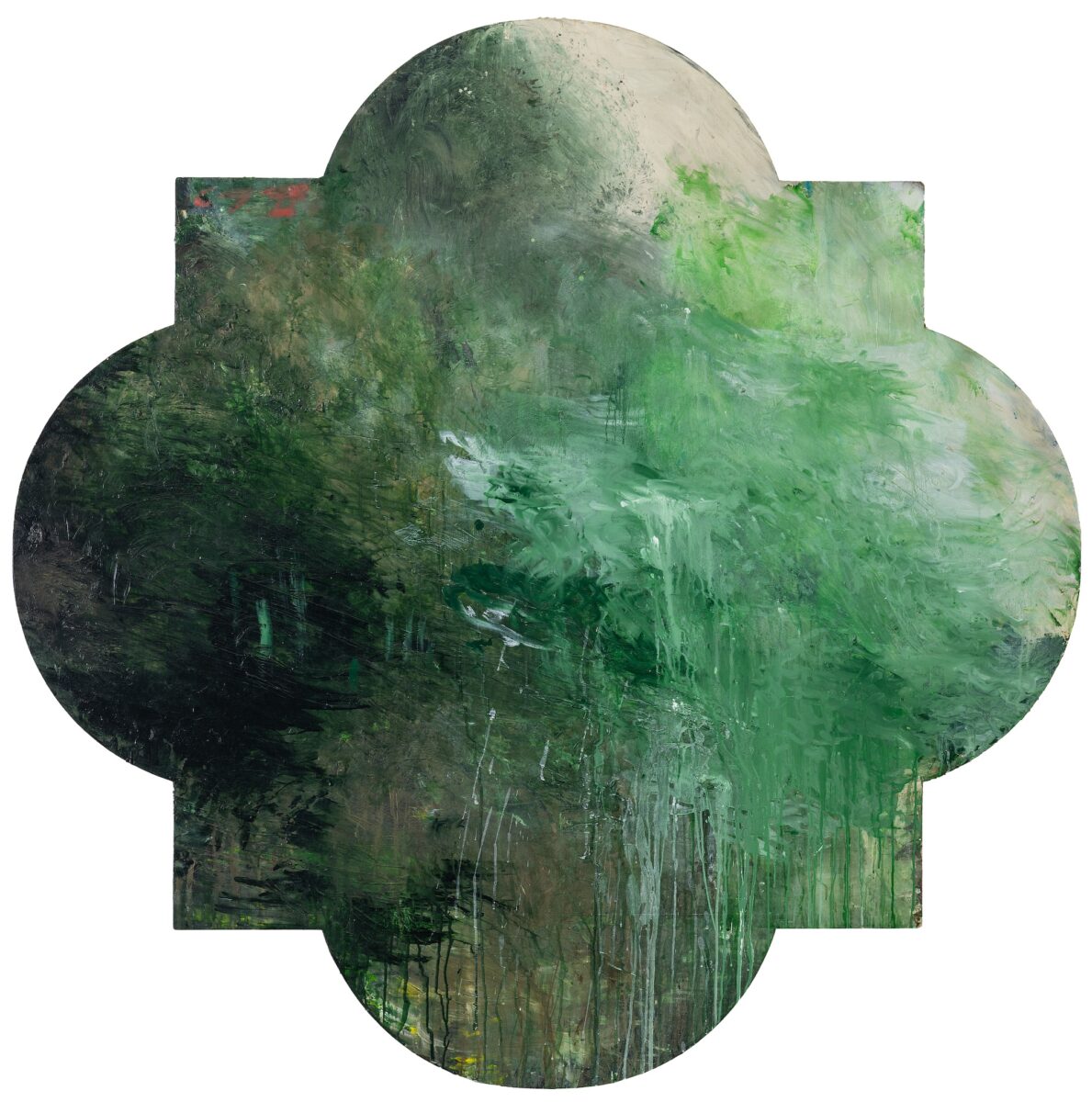
© Cy Twombly Foundation Photo: Peter Schälchli Courtesy Gagosian – Gagosian to present historic work by Cy Twombly
Gagosian to present historic work by Cy Twombly, an exhibition of paintings, a sculpture, and works on paper. The presentation will open across two floors of the galleries at 980 Madison Avenue. Organized in association with the Cy Twombly Foundation, it includes key bodies of work from 1968 through 1990, including pieces that have never been shown before.
The installation on the sixth floor features a series of paintings that Twombly made from 1968 through 1971, representing a more austere approach than do the canvases of the prior decade. Produced during the era of Minimalism and Conceptual art, these canvases have often been interpreted as “blackboards”—their gestural flux breaking down distinctions between painting, drawing, and writing.
One work from 1968 features nested loops that cascade down and across the canvas. Inscriptions and numbers give the work a diagrammatic quality, while its dynamic composition recalls Leonardo da Vinci’s Deluge drawings (c. 1517–18). An untitled painting of nine panels from 1971 forms a sequence linked by accumulated diagonals and curves.
The installation on the fifth floor includes a series of verdant green paintings that Twombly made in Bassano in Teverina, Italy, from 1981 through 1986. Marking the artist’s exploration of color and the liquidity of paint, these layered, atmospheric works abstract elemental meetings of water, earth, and air. A group of these paintings is rendered on barbed quatrefoil panels, their format, palette, and evocation of landscapes echoing Rococo art.
Condottiero Testa di Cozzo (1987) refers to Titian’s portrait of the Grand Duke of Alba (c. 1570) with vibrant passages that paraphrase the Renaissance commander’s red sash, ruffled collar, and black armor. Twombly’s emblematic treatment of natural forms is furthered in a series of vibrant floral abstractions from the Souvenir of D’Arros series (1990), while a sculpture from 1983 exemplifies his engagement with materiality and gesture in three dimensions.
Five Day Wait at Jiayuguan (1980) is a suite of works on paper first exhibited at the 39th Biennale di Venezia and publicly reunited here for the first time in over forty years. Made in Rome, it was inspired by Twombly’s travels the previous year through Russia, Afghanistan, and Central Asia, and is titled after the city in northwestern China, on the edge of the Gobi Desert. Through gestural forms and poetic inscriptions, these works evoke observations of life, history, and culture in the desert landscape.
The exhibition is accompanied by two Gagosian publications: an illustrated two-volume catalogue featuring essays by Suzanne Hudson and Jenny Saville, and a facsimile of the artist’s book of Five Day Wait at Jiayuguan, originally published by Gabriele Stocchi in 1981 for the Biennale di Venezia presentation.
CY TWOMBLY, January 23rd–March 22nd, 2025 Gagosian Madison Avenue
Opening reception: Thursday, January 23rd, 6–8pm
About the artist
Cy Twombly was born in 1928 in Lexington, Virginia, and died in 2011 in Rome. Collections include the Museum of Modern Art, New York; Menil Collection, Houston; Centre Pompidou, Paris; Museum Brandhorst, Munich; Tate, London; and Louvre Abu Dhabi. Exhibitions include Cycles and Seasons, Tate Modern, London (2008, traveled to Guggenheim Bilbao, Spain, 2008–09; and Galleria Nazionale d’Arte Moderna e Contemporanea, Rome, 2009); The Natural World, Art Institute of Chicago (2009); Sensations of the Moment, Museum Moderner Kunst Stiftung Ludwig Wien, Vienna (2009); Paradise, Museo Jumex, Mexico City (2014, traveled to Ca’ Pesaro, Venice, 2015); Treatise on the Veil, Morgan Library and Museum, New York (2014–15); Centre Pompidou, Paris (2016–17); and Making Past Present, J. Paul Getty Museum, Los Angeles(2022, traveled to Museum of Fine Arts, Boston, 2023). Twombly received numerous accolades during his lifetime, including the Praemium Imperiale, Tokyo (1996), and the Golden Lion award at the 49th Biennale di Venezia (2001). In 2010, Twombly’s permanent site-specific painting The Ceiling was unveiled in the Salle des Bronzes at the Musée du Louvre; on that occasion he was named Chevalier of the Légion d’honneur by the French government.
